No shut off in valve innovation
PRODUCT DEVELOPMENT CONTINUES IN TURBOMACHINERY COMPONENTS, SUCH AS VALVES, COUPLINGS, SEALS AND GASKETS
Figure 1: Continental Controls’ AFC 50 fuel control valve
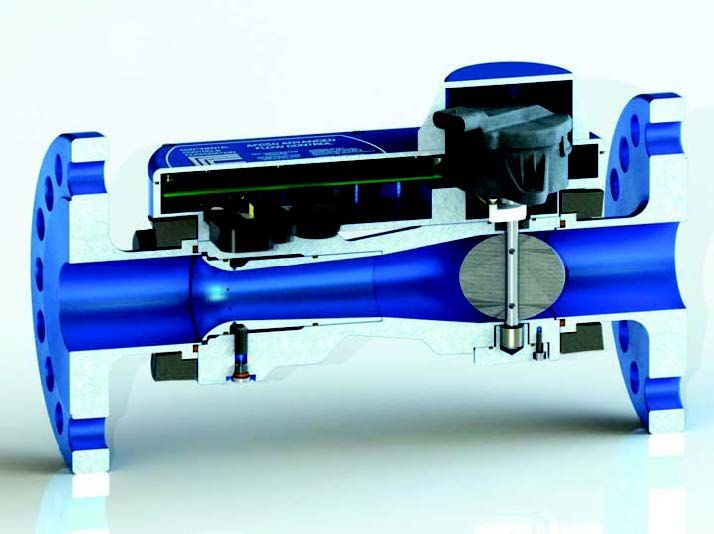
Valves and other components, such as couplings, seals and gaskets don’t get a lot of love. While turbomachinery would be powerless without them, it is the turbines that receive all the glory. Not only do these vital auxiliary components lack admiration, they are largely taken for granted. It is only when something leaks or breaks that they get any attention at all — and then it is in the form of complaints, resentment and grumbling.
We at Turbomachinery International are equally culpable. We have not written a feature on these components for some time. So we decided to remedy that situation and provide a roundup of some of the latest breakthroughs in this field. By doing so, we realize we are barely scratching the surface.
This brief summary includes technology from the likes of Young & Franklin, Bal Seal, Dresser-Rand, Jasc Controls, Continental Controls Corp., Voith, Conval and Sealing Corp. They are supporting the push towards greater efficiency with improved applications for power generation and oil & gas. Some suppliers also provided tips on how to maximize component lifespan.
Valve innovations
Fuel control is one area of innovation. Jasc Controls offers a liquid fuel check valve used in power generation for dual-fuel gas turbines. When the need to alternate between natural gas and diesel fuel is required, the valve provides enough reliability to make the transfer.
“While the industry norm for transfer success is on the order of 35%, utilization of water-cooled fuel controls achieves better than 98% availability,” said Schuyler McElrath, Consultant for New Product Development and Technical Sales at Jasc Controls.
The latest design eliminates the need for O-rings in high temperature environments. A metal-to-metal seal provides continuous service. The connections can be assembled and disassembled up to 12 times before replacing them.
Another valve aimed at fuel control is the AFC 50 valve by Continental Controls Corp. (CCC), which combines flow measurement and flow control in a single unit. This helps operators adapt the valve for a variety of fuel sources or applications. These valves provide a basic platform that can be customized for different valve sizes, type of flange, controls, operating pressures, temperatures and voltages.
“They can adapt or modify the valve for air-fuel ratio (AFR) control, fuel metering, pressure control, fuel trim, throttle control or other uses,” said Rick Fisher, CCC’s Vice President of Sales and Marketing.
The AFC 50 is sized for equipment between 200 kW and 1,500 kW, depending on gas quality and pressure, and provides mass flow measurement that is temperature compensated and takes into account varying gas pressures (Figure 1).
It has a butterfly metering valve with an integrated rotary actuator, but does not measure the mass across the butterfly valve. Instead, it measures the flow across a venturi to increase accuracy to within 2% of reading at most flow volumes, or 0.5% of full scale at low flow rates. This enables improved starting and more accurate measurement of fuel consumption.
“Accurate mass flow lets you start the engine with the same amount of fuel every time and eliminate poor or unreliable starts,” said Fisher.
The AFC 50 allows for measurements of gas pressures down to near zero. It has integrated electronics for closed-loop flow control and closed-loop position control. Its temperature range is -40° C (-40° F) to +85° C (185° F) and up to pressures of 50 psig.
"

Service Valve" alignment="center"/>
Conval’s new Clampseal valve eliminates the potential for stem damage during turbine blowdown and bottom blow-off service. Clampseal Blowdown Service Valves are also used for continuous or tandem boilers. They are available in ¾” through 4” sizes with butt or socket weld and flanged ends (Figure 2).
The uniform one-piece gland eliminates the potential for stem damage. A cartridgestyle packing chamber allows rapid access to valve trim for inspection and maintenance. The pressure-seal, fixed backseat provides maximum valve integrity by ensuring a positive internal stop for the valve and stem-anddisc assembly. This isolates the packing from line pressure when the valve is open as a means of lengthening overall lifespan.
Figure 3: Voith SelCon linear actuator
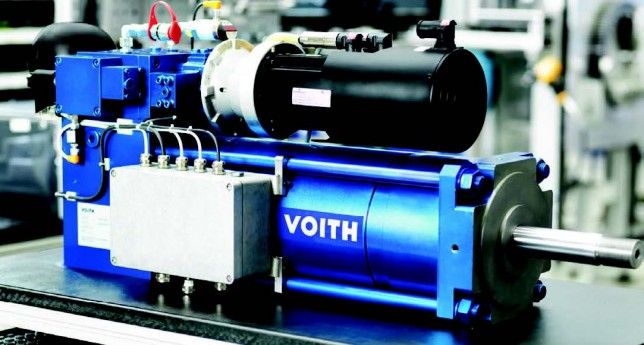
Hydraulic operation
Hydraulics are increasingly deployed with valves to provide a higher degree of control. The Voith SelCon linear actuator, for example, has safety functions for valve controls on gas and steam turbines. Its self-contained hydraulics provides high-force density while its electromechanical elements help with system integration. Forces of up to 500 kN allow it to be used on turbines under any ambient conditions. The hydraulics system does not require an external power pack plus oil tank, control block or pipework (Figure 3).
Hydraulics are also part of a new valve from Dresser-Rand. The Gimpel Electro Hydraulic Trip Throttle Valve (EHTTV) has been designed to prevent the catastrophic failure of steam turbines by stopping steam flow in less than 0.3 seconds. This closing force is up to 10 times faster than typical latch-type valves. Its back-seated stem design prevents steam loss when the valve is in the fully open position (Figure 6).
The EHTTV operates independently of the installed turbine oil system but requires electrical power to operate. It can be locally or remotely actuated and maintains a five-year overhaul cycle with no lubricating requirement. It also complies with API- 612 standards. Steam savings are said to be up to 250 lb/hr.
Hydraulically actuated gas control valves are occasionally susceptible to safety problems. Circulating lubrication oil that acts in gas turbines as the hydraulic controls fluid can cause valves to stick and leak, said Andrew Dwyer, Aftermarket Manager at Young & Franklin (Y&F). The components that seal the high-pressure oil wear-out, which can lead to oil and degraded actuation. Hydraulic controls can also reduce the life of actuator and valve assemblies.
“To combat these issues, OEMs and aftermarket operators in the power generation and oil and gas segments are increasingly controlling fuel delivery with electro- mechanically actuated (EMA) gas valves,” said Dwyer.
EMA valves from Young & Franklin, for example, were designed to overcome these maintenance and safety issues. They eliminate the use of turbine lubrication oil, servo-control valves and soft-seals for high-pressure oil.
A digital motor controller receives commands from the turbine control system that are relayed to the valve where the actuator system is mechanically coupled to the valve stem. A mechanical actuator translates the rotation of the motor to linear valve-stem motion. Feedback on valve position is provided via external linear variable differential transforms (LVDTs) or internal resolvers.
"
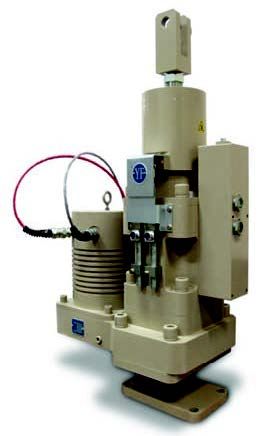
Vane Actuator" alignment="center"/>
“The Y&F EMA controllers and valves have accumulated tens of thousands of firing hours on GTs without incident,” said Dwyer. “The advantages of removing hydraulic seals extend the recommended time-zero overhaul cycles by double compared to hydraulic actuation.”
The company is launching an EMA series of products (Figure 4) for gas turbine airflow control (inlet guide vanes, variable stator vanes, and variable turbine nozzles). These EMA guide vane actuators are selfcontained units. Advances in motor design and control enable actuation loads to meet the demands of large frame gas turbines.
Couplings, gaskets and seals
New couplings, gaskets and seals may offer certain features and benefits beyond conventional products. Hydrodynamic variable- speed fluid couplings from Voith, for example, are used in combined cycle plants to control the speed of boiler feed pumps. They are designed for operating conditions ranging from -40°C to +55°C.
They ensure soft acceleration of the driven machine and load-free motor start-up to preserve the driveline. Speed is controlled without any contact, thus dampening torsional vibration and shocks. The couplings supply both the motor and the boiler feed pump with lube oil. They can transfer power of up to 5 MW.
Figure 5: Bal Seal Engineering’s Hastelloy Bal Spring canted coil spring
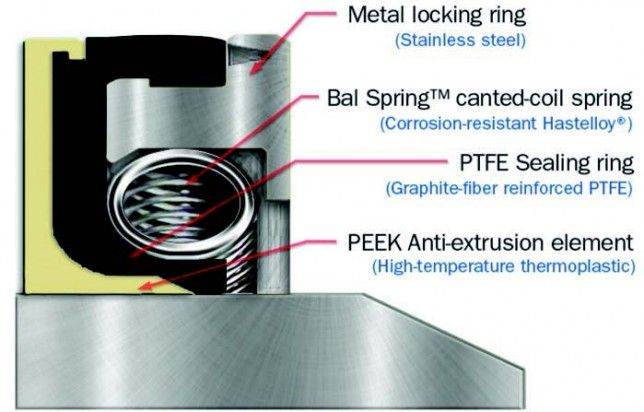
On the gasket front, spiral wound gaskets have been the traditional approach in turbomachinery. However a gasket from Sealing Corp (Selco) consists of bolt disk springs to maintain the desired pressure despite mechanical shock, pressure surges or thermal expansion and contraction. They maintain a seal on high-pressure, high-temperature lines, eliminating leaks and lowering maintenance costs.
“Selco gaskets have a seal base which consists of layers of convoluted stainless steel and graphite within the grooves on both sides,” said John Patterson, President of Selco. “It is thin and flexible.” As the metal backing is a single piece, it does not unwind like spiral-wound gaskets. The flexible metal base does not need to be compressed to achieve a seal, but acts like a spring, keeping the graphite tight against the flange.
Another novel design from Bal Seal Engineering is a multi-component seal designed for high-pressure, high-velocity operating conditions. The LKS high PV seal consists of a spring-energized, graphite-reinforced PTFE sealing ring coupled with a high-temperature thermoplastic anti-extrusion element and a metal locking ring (Figure 5).
Because it leverages the properties of different polymers and incorporates mechanical performance features, it offers longer service life than similar spring-energized seals in turbomachinery applications, according to Jim Harty, the company’s Global Energy Market Manager.
For example, the seal’s metal locking ring prevents rotation, and under high pressures and velocities, it guards against extrusion of the seal jacket material by supporting it in the gland with little or no clearance between the seal and rotating shaft. The metal ring also helps support the seal when side loading occurs; and it keeps it in place while minimizing sealing lip wear and heat caused by friction.
At moderate speeds, the graphite-reinforced sealing ring retains the ability to seal in high-temperature, high-pressure service conditions, while the thermoplastic anti-extrusion element extends the seal’s performance range at low and high temperatures (–94°F to +550°F). The Hastelloy Bal Spring canted coil spring energizes the seal lip.
“The LKS high PV seal has been used by oil and gas OEMs to reduce downtime, leakage rates and improve predictability in progressive pumps and downhole tools,” said Harty.
Figure 6: Dresser-Rand EHTTV Gimpel Valve
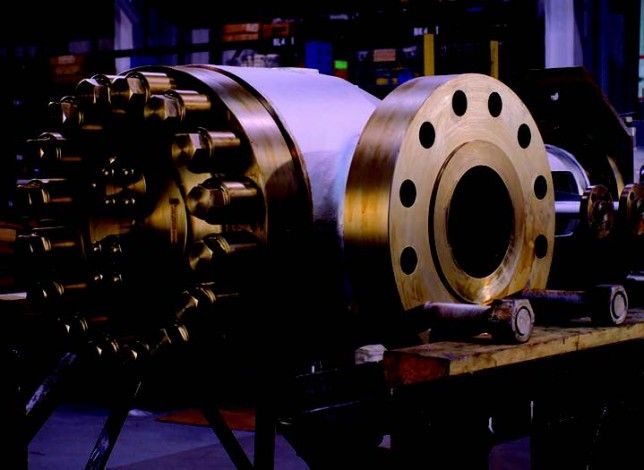
Prolonging lifespan
Valves, seals and other components require regular maintenance. Jasc Controls’ McElrath explained the benefits of maintenance and valve selection in a back-up liquid fuel system. And Bal Seal’s Harty offered tips on how to increase seal life.
McElrath said the operation and reliability of a back-up liquid fuel system are directly related to the ability to exercise and maintain the system regularly; and that boils down to correct component selection if a long lifespan is to be achieved.
“Valve designs which offer better than ANSI class VI sealing in the reverse-flow direction prevent system evacuation, eliminate high exhaust temperature trips, reduce flow divider and fuel pump failures in addition to allowing the seamless transfer from gas to liquid fuels,” he said.
Sealing success requires proper part lubrication, optimal shaft hardness and surface finish, and minimal run-out and shaft-to-bore misalignment, Harty added.